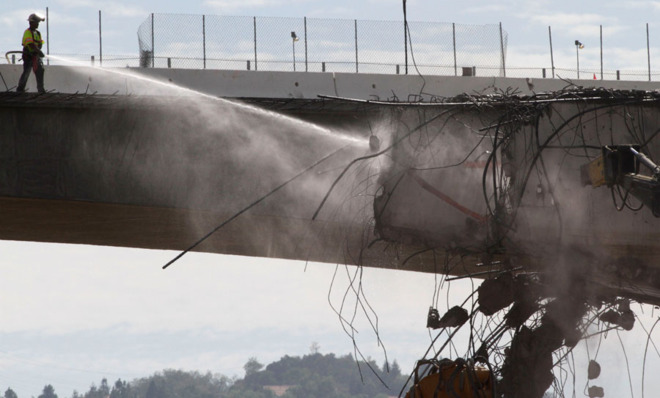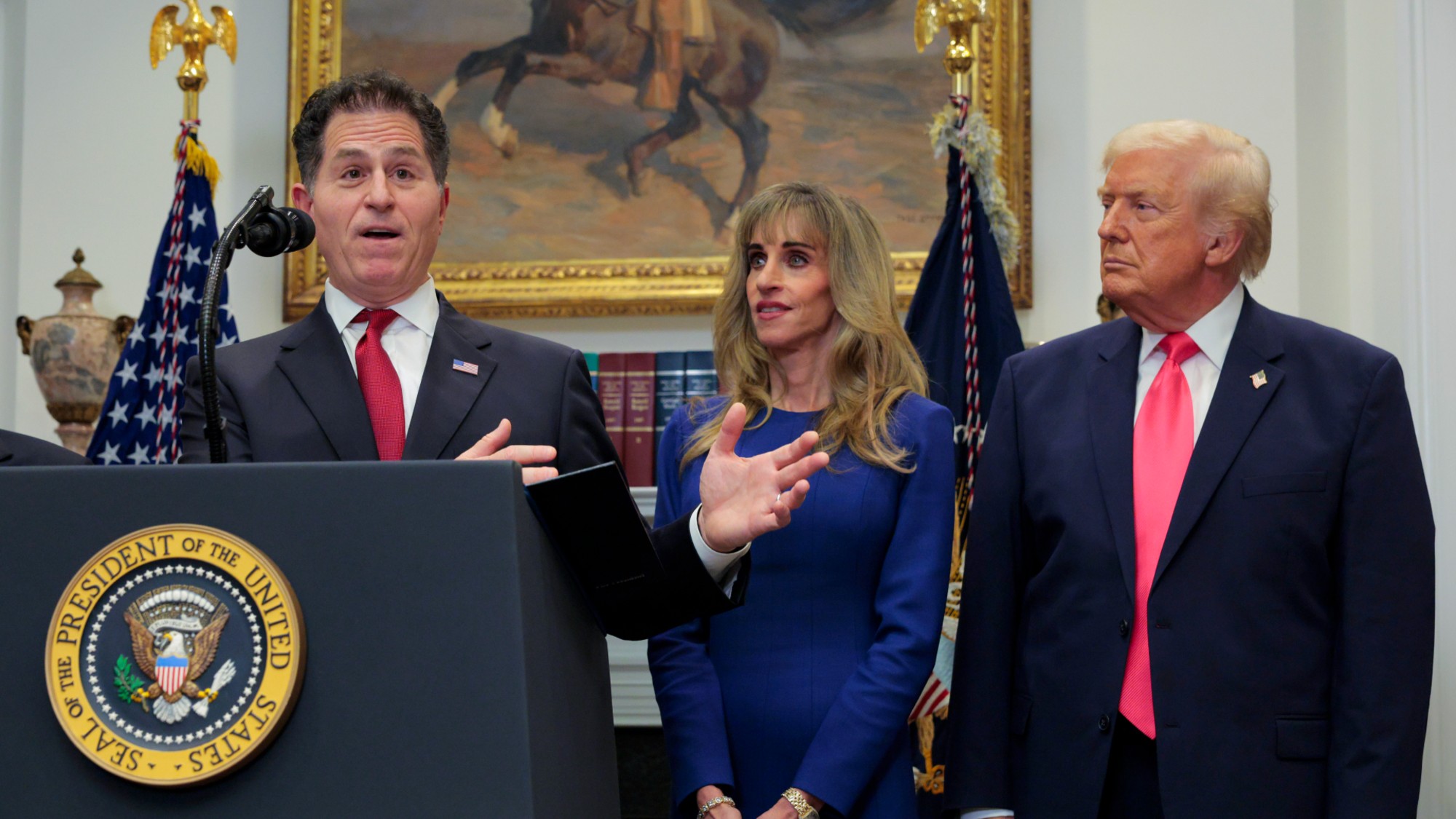Inside America's crumbling infrastructure
The country's aging roads and bridges badly need repair or replacement. But are we willing to pay the cost?

What's the problem?
America once had the best road and transportation system in the world, but nothing lasts forever. Last May, the I-5 bridge near Seattle buckled when an overloaded tractor trailer grazed an overhead girder, sending two cars plummeting into the river below. In 2007, a stretch of the I-35W bridge in Minneapolis collapsed during rush hour, killing 13, injuring 145, and resulting in repairs costing $234 million. In 2009, the 80-year-old Champlain Bridge between upstate New York and Vermont was shut down with just 10 minutes' warning after an underwater inspection revealed severe structural weaknesses. Throughout the country, many urban roads and highways built decades ago now carry five to 10 times the traffic the original engineers expected and require constant emergency repair — creating horrible traffic jams. Water and gas pipelines laid in the first half of the 20th century are failing, leading to explosions and floods. "Some of this infrastructure is more than 100 years old," said Rick Grant, owner of a Maryland structural engineering firm, "but it wasn't designed with more than a 50-year life span in mind."
Are the roads and bridges safe?
The Week
Escape your echo chamber. Get the facts behind the news, plus analysis from multiple perspectives.

Sign up for The Week's Free Newsletters
From our morning news briefing to a weekly Good News Newsletter, get the best of The Week delivered directly to your inbox.
From our morning news briefing to a weekly Good News Newsletter, get the best of The Week delivered directly to your inbox.
Every four years, the American Society of Civil Engineers (ASCE) releases a comprehensive assessment of U.S. infrastructure. Its most recent report card, from 2013, had an overall grade of D+. Catastrophic events remain rare, but the nation's 607,380 bridges have an average age of 42 years, and one in nine is rated structurally deficient. Among them are the Storrow Drive Bridge in Boston, which has cement pavement too thick for its corroding steel beam structure to support, and the U.S. Route 1/9 Bridge over the Passaic River in New Jersey, which is rusted out. They and dozens of other deficient bridges still carry heavy traffic daily. Despite a recent uptick in government spending to $91 billion annually, the Federal Highway Administration estimates this amount needs to be doubled. "It's a no-brainer," said Jeffrey Zients, director of the National Economic Council. "If we don't act, we could lose our competitive edge in infrastructure."
How did things get so bad?
Time and neglect. The U.S. built much of its vast network of highways and roads beginning in the late 1950s, when President Dwight Eisenhower signed the Federal-Aid Highway Act into law to link rural and urban areas and spur economic growth. For most of the subsequent 40 years, government spending on highway construction and maintenance was seen as an important investment and averaged well above 2 percent of gross domestic spending. In 2012, it fell to a 20-year low of 1.5 percent. By comparison, China spends 7 percent of its GDP on infrastructure and India spends 5 percent. As a result, U.S. infrastructure now ranks 14th globally. "When you look at politicians and Congress," said former ASCE president Andrew Herrmann, "they're not really looking to the future; they're looking to get re-elected."
Where will the money come from?
A free daily email with the biggest news stories of the day – and the best features from TheWeek.com
The majority of spending on municipal transportation projects comes from state and local governments and the federal Highway Trust Fund. The HTF contributes from $40 billion to $50 billion a year to construction projects and is funded by a gas tax of 18.4 cents per gallon, a rate that has not increased since 1993. Raising the gas tax is "the most viable, responsible, and effective near-term solution," said AAA's Kathleen Bower. But ever since 1995, when conservative lobbyist Grover Norquist persuaded Republicans to pledge to never raise taxes, Congress has refused to increase the gas tax. "It's not that they don't like roads," said President Obama of his GOP counterparts. "They just don't want to pay for it." Obama has put forth a plan to raise some private capital for infrastructure investments, but that is seen as a short-term solution. "None of the steps we are taking should be seen as a substitute for adequate public financing," said Transportation Secretary Anthony Foxx. "There is no substitute for that."
How big are the challenges?
They are massive, because the public infrastructure serving the needs of 316 million people is so large and expensive to maintain, and it encompasses so many different services and utilities. It includes roads, bridges, mass transit systems, waste- and drinking-water management, levees, dams, ports, electrical grids, and broadband communication systems. And it is all interwoven into a complex web, so that failure in one area can have a cascading effect across the grid. For example, power outages during Superstorm Sandy shut down several water treatment facilities, which led to the release of roughly 11 billion gallons of raw sewage into East Coast waterways. "What we really need is some innovative thinking about financing," said Department of Energy senior scientist Tom Wilbanks. "It's kind of a national crisis."
Putting Band-Aids on ancient pipes
While the majority of America's roads and bridges were built in the 1950s, many of our water systems date to the early 1900s or even to the 19th century. Cities across the country are starting to see them fall apart. In late July, a 93-year-old water main burst beneath Sunset Boulevard in Los Angeles, sending up to 10 million gallons of drinking water gushing into the streets. Residents of Baltimore contend with roughly 1,000 bursting pipes every year. In Houston, more than a quarter of the city's water supply is either lost or unaccounted for because of underground leaks. Every year, there are 240,000 water main breaks in the U.S., and inadequate sewage systems let up to 850 billion gallons of untreated waste water flow into rivers and lakes. Yet despite the growing crisis, the U.S. still relies on "the Band-Aid approach," said Harvey Gobas, co-author of a report on California's water system. "You fix it, it lasts a few more years, but you still don't have a new pipe."
-
 Can Mike Johnson keep his job?
Can Mike Johnson keep his job?Today's Big Question GOP women come after the House leader
-
 A postapocalyptic trip to Sin City, a peek inside Taylor Swift’s “Eras” tour, and an explicit hockey romance in December TV
A postapocalyptic trip to Sin City, a peek inside Taylor Swift’s “Eras” tour, and an explicit hockey romance in December TVthe week recommends This month’s new television releases include ‘Fallout,’ ‘Taylor Swift: The End Of An Era’ and ‘Heated Rivalry’
-
 ‘These accounts clearly are designed as a capitalist alternative’
‘These accounts clearly are designed as a capitalist alternative’Instant Opinion Opinion, comment and editorials of the day